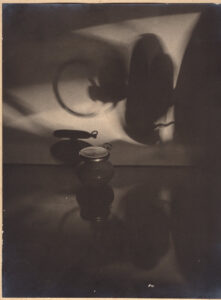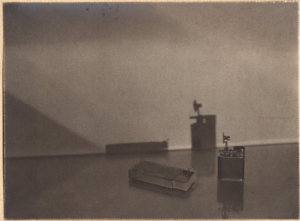In this fourth issue of Paris Photo online, we present you with the work of Antoni Campañà (Arbúcies, 1906 – Sant Cugat del Vallès, 1989), photographer whose work moves between pictorialism and avant-garde experimentation. Also known as a leading photojournalist, his photographs of the Spanish Civil War remained unknown until 2019. Campañà collected nearly 5,000 photographs of the war and kept them hidden for decades.
RocioSantaCruz is currently working with Campañà’s unpublished oeuvre. Paris Photo 2020 was to host the first international presentation of Campañà’s work We are pleased to share some of his photographs in this online edition.

The double gaze of Antoni Campañà
Antoni Campañà was born at the same time as photojournalism, a field in which he made his career as a sports reporter and pioneer of the tourist postcard. Before turning thirty, Campañà had achieved wide national and international recognition for his refined mastery of bromoleum technique. In the years before the Spanish Civil War, he received numerous awards and consolidated his position as an artist. He was a member of Agrupació Fotogràfica de Catalunya and in 1933 he traveled to Munich to train with photographer Willy Zielke. He carried out an important work of experimentation and innovation, thus transcending the pictorialist parameters and becoming an unparalleled benchmark of experimental photography in Spain. From those early 30s, we still have compositions like Tracció de sang (1933), framed within the traditional portrait of farming and tradition.
When the war broke out, Campañà’s political commitment made its way into his work, leading him to compose an extensive photographic documentation of the war. Unlike many of his contemporaries, Campañà’s visual testimony remained hidden for decades. Thirty years after his death, his family found the images stored in red boxes, which come to light in La Caja Roja (2019), an investigation of Plàcid Garcia-Planas, the historian Arnau Gonzàlez i Vilaltaand the photographer David Ramos, published in Catalan and Spanish by Comanegra and by Éditions du Seuil in French.

Untitled, 1928-1930
Reflecting on this unknown period, it becomes clear that the Spanish Civil War opened a symbolic trench that Campañà was forced to cross, not only as a citizen, but also as an artist. As he moved from one side to the other, his career changed radically. The early Campañà, concerned with meticulous preparation and aesthetic harmony, gave way to a Campañà shaken by the frantic rhythms of battle, death and reality. His camera turned him into a witness to the horrors of truth, and only when shooting with the Rolliflex, which he reserved for portraits, did he allow himself to explore a more avant-garde style.
As a reflection of the ravages of war, the artist’s decision can be read as a symbolic attempt to bury an all too painful past. The Franco dictatorship foreclosed the mere possibility of creating spaces of social reparation where losses, both political and personal, could be avowed. Thus, Campañà’s silence regarding this period of his work is understood as a direct effect of the sheer lack of collective languages of mourning, an effect of the impossibility of addressing trauma. Campañà’s work speaks about the trajectory of an artist, about how his gaze adapts to the volatility of life, but it also speaks about the importance of collective memory. Thanks to his red boxes, today we can add new pieces to our narrative and find new words to name our grief.